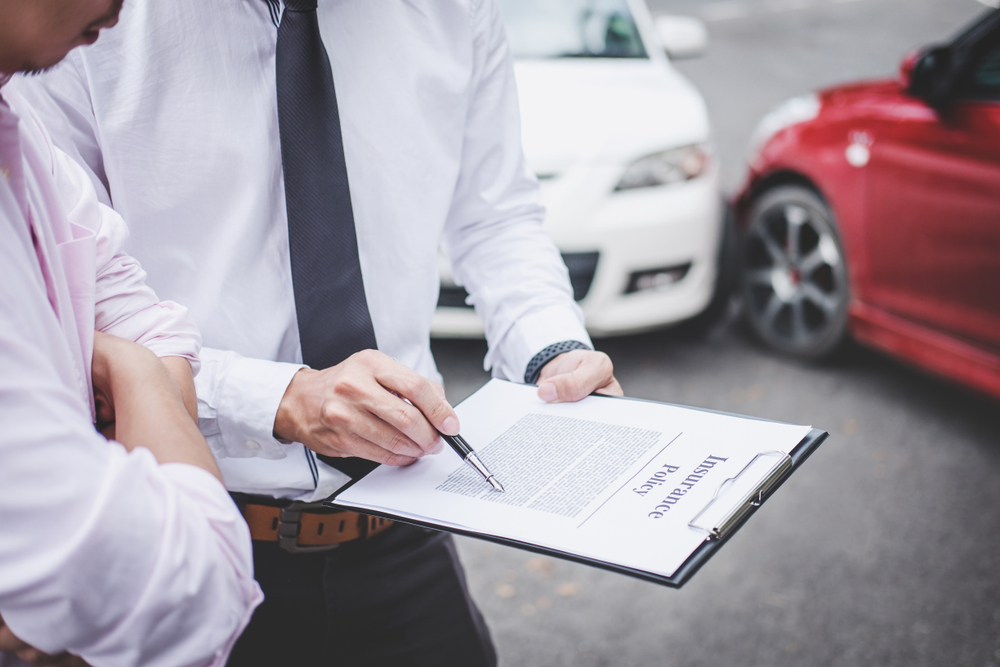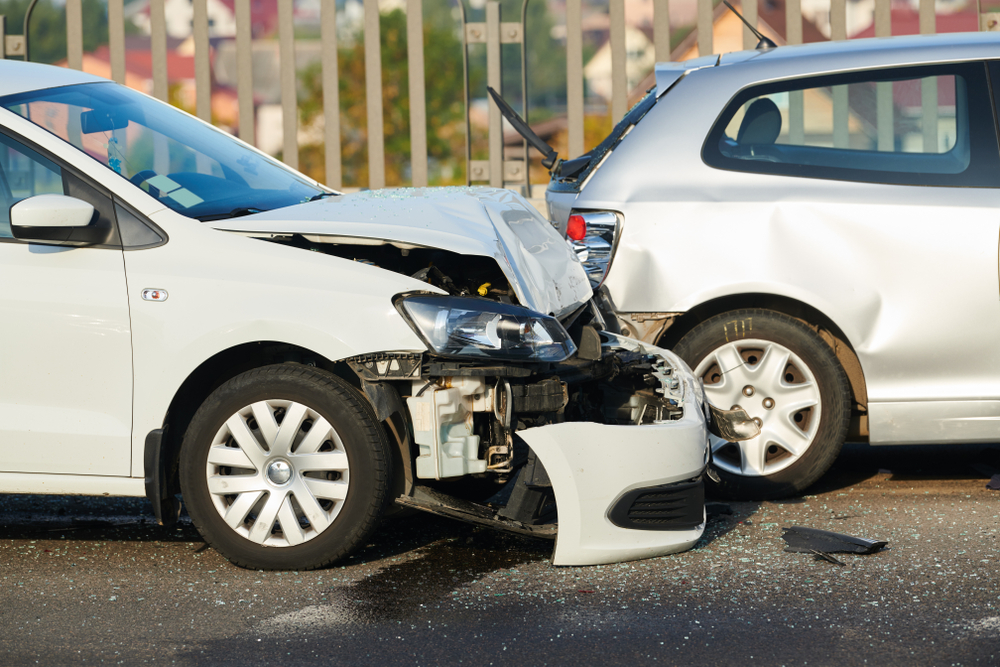The statute of limitations in a car accident claim establishes a deadline by which the injured accident victim must file a personal injury lawsuit seeking justice through compensation. In most instances, the statute of limitations deadline is two years from the accident date. If the accident victim fails to file a lawsuit within that timeframe, in most situations, the court will prevent them from filing a lawsuit or recovering monetary damages for their injuries.
A knowledgeable Calgary car accident lawyer in your area will be aware of the statute of limitations deadline and can file a timely personal injury lawsuit in your case. Your lawyer can then aggressively negotiate with the insurance company or litigate your case to a resolution in the court system, seeking the financial recovery you deserve for your accident-related losses.
Why Have a Statute of Limitations Deadline in Car Accident Cases?
Establishing a statute of limitations in a car accident case resulting from another driver’s negligence is essential to uphold the principles of fairness and judicial efficiency. This legal timeframe imposes a reasonable limit on the period within which a victim can file a claim or lawsuit, striking a balance between the rights of the injured party and the need for a timely resolution.

Having a statute of limitations ensures that claims are brought forward promptly, preserving the integrity of evidence and witness recollections. As time passes, evidence may deteriorate, memories may fade, and the accuracy of details may diminish. Imposing a limitation encourages the timely initiation of legal proceedings, contributing to the overall reliability of the case.
Additionally, a statute of limitations fosters legal certainty and predictability. Parties involved can rely on the timeframe set by the law, allowing for structured and efficient case management. This predictability is vital for both accident victims (i.e. plaintiffs) and at-fault parties (i.e. defendants), as it promotes a fair and orderly legal process.
Furthermore, a statute of limitations prevents the indefinite suspension of potential legal actions, ensuring that the legal system can focus on resolving current disputes. Time limits discourage the unnecessary delay of claims, promoting the timely resolution of cases and preventing the backlog of legal matters that may impede the judiciary’s ability to address emerging issues.
In general, implementing a statute of limitations in car accident cases resulting from another driver’s negligence serves to balance the interests of all parties involved, preserving evidence, maintaining legal predictability, and promoting the efficient administration of justice. This legal framework encourages timely resolution while preventing the indefinite postponement of potential legal actions.
What Happens if I Don’t File a Timely Car Accident Claim or Lawsuit?
If you fail to file a car accident claim or lawsuit within the prescribed statute of limitations timeframe, you typically forfeit your legal right to seek compensation for the injuries and damages suffered. The statute of limitations acts as a strict deadline, and once it expires, the court generally dismisses any attempts to initiate legal proceedings.
The consequence of missing this deadline is profound. You lose the opportunity to pursue legal action against the at-fault party and are barred from recovering any financial compensation for your injuries through the legal system. The court views the expiration of the statute of limitations as a conclusive decision not to pursue the claim, and consequently, your case loses its legal standing.
While certain circumstances may warrant exceptions or extensions to the statute of limitations, these situations are typically rare and require compelling justification. Generally, the courts adhere strictly to the established deadlines.
This strict adherence to the statute of limitations timeframe underscores the importance of timely legal action. It emphasizes the need for accident victims to initiate the claims process promptly, gather necessary evidence, and consult with legal professionals to ensure compliance with the legal timeframe. Failing to act within this prescribed period results in the loss of the right to seek legal redress for the injuries and losses incurred in the car accident.
Types of Car Accidents Resulting from Others’ Negligence and the Injuries that Result
Car accidents resulting from other drivers violating traffic laws or operating their vehicles in a careless or reckless manner can lead to a variety of collision scenarios and associated injuries. One common type is the rear-end collision, often resulting from drivers following too closely or failing to brake in time. These accidents can result in whiplash, back injuries, and, in severe cases, head injuries.

Intersection collisions frequently occur when drivers fail to yield the right-of-way, run red lights, or disregard stop signs. T-bone accidents, where one vehicle is struck on the side, and broadside collisions are common outcomes. Injuries from intersection collisions vary but may include broken bones, spinal injuries, and head trauma.
Side-swipe collisions arise when a driver improperly changes lanes or drifts into another driver’s path. These accidents can lead to injuries such as cuts, bruises, and fractures, depending on the force of the collision and the vehicles involved.
Multi-vehicle pile-ups often result from reckless driving behaviours, such as speeding or aggressive maneuvers. Injuries in these accidents can range from minor bruises to severe trauma, including head injuries, spinal cord injury, and internal injuries.
Roll-over accidents are also particularly dangerous and may occur when a driver takes a turn too sharply or loses control at high speeds. Injuries from roll-over accidents are often severe, encompassing fractures, head injuries, and spinal cord damage.
Pedestrian accidents may transpire when drivers fail to yield to pedestrians at intersection crosswalks or ignore traffic signals. Pedestrian accident injuries can be catastrophic and may include traumatic brain injuries, bone fractures, and internal organ damage.
Cyclists are also vulnerable to accidents that negligent drivers cause. Collisions may happen when drivers fail to share the road responsibly, leading to injuries like broken bones, concussions, and road rash.
When drivers and passengers suffer injuries in car accidents, they may have to attend doctor visits, undergo hospitalizations, undergo surgeries, and attend physical therapy or pain management appointments. In addition, if they suffer a permanent injury in their accident, they may need to undergo medical treatment well into the future.
Moreover, due to their physical and mental injuries, they may be unable to work, incurring considerable loss of income. Fortunately, accident victims may be eligible to recover compensation for their losses by way of a personal injury claim or lawsuit.
Ultimately, the nature of car accidents resulting from other drivers’ traffic law violations or reckless behaviour varies widely. The injuries sustained can range from minor cuts and bruises to severe and life-altering conditions. Recognizing the potential risks and consequences of careless or reckless driving underscores the importance of promoting responsible driving behaviours and adhering to traffic regulations for the benefit of all road users.
Legally Proving a Car Accident Claim
To legally prove the elements of duty, breach, causation, and damages in a car accident claim resulting from another driver’s negligence, a comprehensive collection of evidence is crucial. Duty is established through various means, including traffic laws and regulations that define the standard of care expected from drivers. Evidence demonstrating the existence of applicable traffic laws and regulations, witness statements, and expert testimony can solidify the duty element.
Breach of duty, indicating the failure to meet the standard of care, is often proven through evidence such as traffic citations, surveillance footage, or eyewitness accounts. These sources can provide a clear picture of the at-fault driver’s actions leading up to the accident, illustrating any violations of traffic rules or reckless behaviours that constitute a breach of duty.
Linking the at-fault driver’s breach of duty to the injuries sustained, also known as causation, requires robust evidence. Accident reconstruction experts may analyze the scene, vehicle positions, and skid marks to establish a causal connection. Medical records and expert testimony can further validate the correlation between the negligent actions and the injuries suffered, demonstrating a direct link between the breach of duty and the resulting harm.
Proving damages involves presenting evidence of the injuries and losses that the victim suffered due to the accident. Medical records, diagnostic reports, and testimony from healthcare professionals serve to illustrate the extent of physical injuries. Additionally, documentation of lost income and loss of earning capacity, including employer payroll records and tax documents, contribute to establishing the economic effect of the damages incurred.
Eyewitness statements, photos or videos from the accident scene, and police reports are valuable pieces of evidence that can corroborate the entire sequence of events leading up to the collision. These sources help paint a comprehensive and accurate picture of the circumstances, bolstering the car accident claim’s overall credibility.
Legally proving the duty, breach, causation, and damage elements in a car accident claim necessitates a multifaceted approach. Evidence from traffic laws, citations, surveillance footage, eyewitness accounts, accident reconstruction, medical records, and various documentation collectively contribute to constructing a compelling case that establishes the at-fault driver’s negligence and its direct connection to the injuries and damages that the accident victim suffered.
Recovering Favorable Compensation in a Car Accident Claim or Lawsuit

When pursuing a car accident claim or lawsuit resulting from a negligent driver’s actions, accident victims may seek various damages to address the multifaceted effect on their lives. Compensation for past and future pain and suffering acknowledges the physical and emotional distress the victim endured due to the accident, ensuring that they receive restitution for the intangible toll on their overall life and well-being.
Inconvenience damages recognize the disruptions and inconveniences that accident-related injuries cause, encompassing the challenges in daily life, altered routines, and the need for assistance during the recovery process. Compensation seeks to address the tangible inconveniences that victims endure due to the accident, fostering a more comprehensive approach to restitution.
Emotional distress damages account for the psychological effects of the accident, compensating victims for anxiety, fear, and other emotional trauma resulting from the negligent driver’s actions. This form of compensation aims to address the intangible consequences on the victim’s mental and emotional well-being.
Victims can receive compensation for income lost during the recovery period when they are unable to work due to the accident-related injuries. Loss of earning capacity acknowledges potential reductions in future earnings resulting from long-term impairments sustained in the accident.
Loss of spousal consortium compensates for the adverse effects on the victim’s relationship with their spouse. The emotional and physical support, companionship, and other non-economic contributions that the victim provided to their spouse may be diminished due to the accident. Compensation in this category acknowledges and seeks to alleviate the strain on the spousal relationship that the incident caused.
In cases of egregious negligence or intentional misconduct, punitive damages may also be available to the accident victim. These damages serve as a form of punishment for the at-fault driver and a deterrent against similar behaviour in the future, extending beyond compensatory purposes to address the need for accountability.
The total damages an accident victim recovers in a car accident claim or lawsuit encompass past and future pain and suffering, inconvenience, emotional distress, lost income, loss of earning capacity, loss of spousal consortium, and, in certain cases, punitive damages. Each category addresses specific aspects of the victim’s losses, ensuring a comprehensive and fair restitution for the multifaceted effects of the accident. A knowledgeable car accident lawyer in your area can take the appropriate legal steps to pursue a favourable settlement offer or litigation result that fairly compensates you for your injuries and losses.

Speak with an Experienced Car Accident Lawyer Today
If you recently sustained injuries in a car accident that a negligent driver caused, you need to obtain the legal help that you need as quickly as possible. Otherwise, you may inadvertently waive your right to file a personal injury lawsuit and recover the financial compensation you deserve.
An experienced Calgary personal injury lawyer in your area can file a timely claim or lawsuit in your case and aggressively fight for your legal rights and interests. Your lawyer will do everything possible to maximize your overall monetary settlement or award, making you whole again after your accident.
